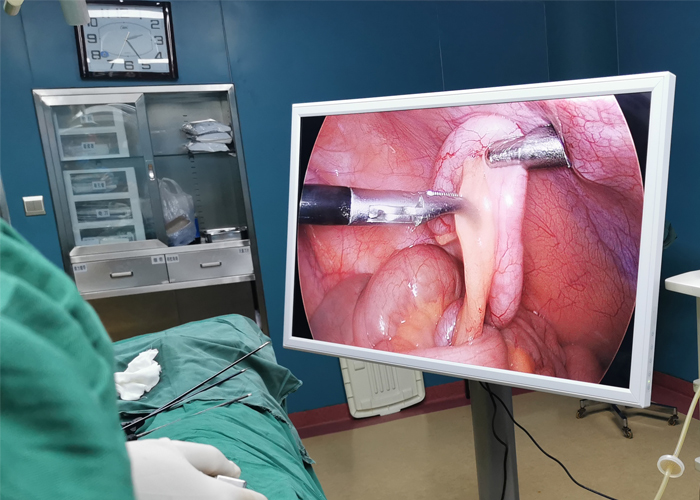Laparoscopic surgery is the use of laparoscope and related equipment to perform operations: use cold light sources to provide illumination, insert the laparoscopic lens into the abdominal cavity, and use digital camera technology to transmit the image captured by the laparoscopic lens through optical fibers to the subsequent signal processing System, and real-time display on the dedicated monitor. The doctor analyzes and judges the patient's condition through the images of the patient's organs from different angles displayed on the monitor screen, and uses special laparoscopic instruments to perform operations. Laparoscopy technology has become an indispensable examination and treatment method for female infertility. So what are the effects of laparoscopy on infertility?
The effect of laparoscopy on infertility
1. Infertility caused by endometriosis. Mild cases are often asymptomatic, and there are no abnormal findings on gynecological examination, which is called occult endometriosis. Laparoscopy can find punctate or lamellar endometrial lesions, which are purple or coffee-colored, and spread on the surface of the peritoneum or pelvic organs;
2. For those with normal hysterosalpingography, if there is no other cause, about 50% of women will become pregnant within six months. Those who have not conceived for more than six months should undergo laparoscopy. During laparoscopy, methylene blue is injected into the vagina, cervix, and uterine cavity. Through laparoscopy, it can be directly observed that methylene blue flows through the fallopian tube, overflows the umbrella port and enters the pelvic cavity, which proves that the fallopian tube is unobstructed. If it does not work, the obstructed area can be seen. At the same time, the range and degree of adhesion between the fallopian tube and the ovary, and the anatomical relationship between the ovary and the fimbria of the fallopian tube can be observed to estimate the peristalsis of the fallopian tube and the egg picking function.
3. Infertile patients with a history of postpartum infection, pelvic inflammatory disease, pelvic surgery, or appendix surgery should undergo laparoscopy in order to detect possible pelvic adhesions as soon as possible and separate the adhesions. Differentiate tuberculous pelvic inflammatory disease from chronic pelvic inflammatory disease and endometriosis and other clinically difficult diseases. If there are miliary nodules, cheese-like substances, calcified nodules, stiff fallopian tubes and beaded, it can be diagnosed as pelvic tuberculosis.
4. Polycystic ovary syndrome. In some cases, the symptoms are very atypical, and the examination has no typical signs. The increase in luteinizing hormone is not obvious. Laparoscopy is helpful for diagnosis;
5. Luteinized follicle unruptured syndrome: For those who cannot be diagnosed by B-ultrasound, laparoscopy can distinguish ovulation or not, and the time for microscopy should be when the basal body temperature rises 2 to 4 days.
In addition, the diseases that laparoscopic surgery can treat include all kinds of ectopic pregnancy, tubal sterilization; infertility, uterine perforation and sterilization loop; ovarian cysts, tumors, ruptured corpus luteum, polycystic ovary syndrome; uterus Endometriosis, adenomyosis, ovarian chocolate cyst; uterine fibroids, uterine prolapse, dysfunctional uterine bleeding; pelvic inflammatory disease and pelvic abscess, etc.
